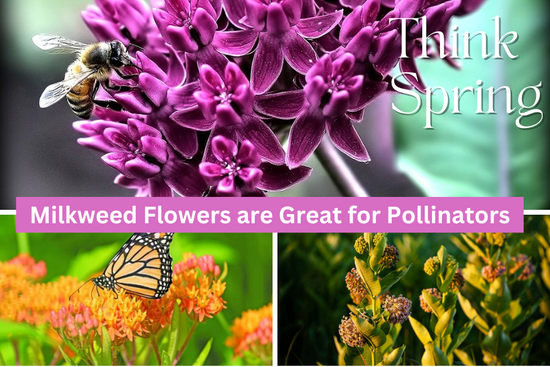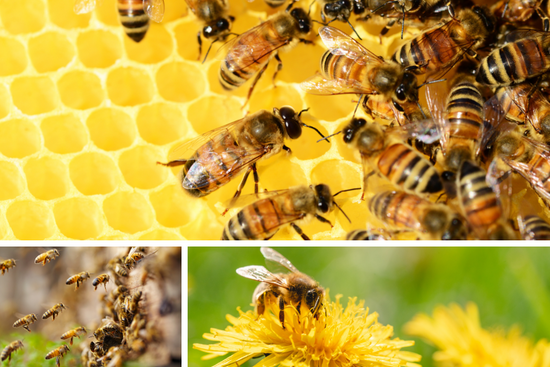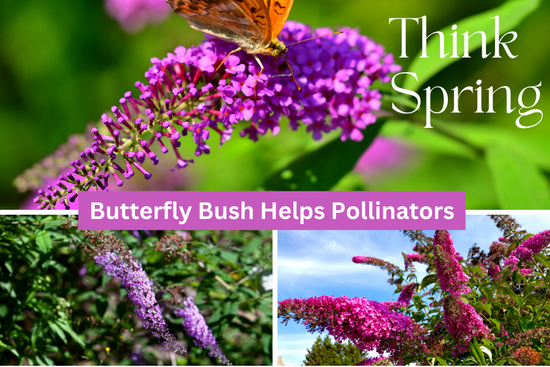

Intro
In the era we live in, where "save the bees" is more than a slogan but a call to action for global conservation, enticing pollinators to our personal spaces through thoughtful gardening can be our contribution.
Among the varied plants that attract pollinators, zinnias stand out as pollinator-friendly because of their vibrant colors, striking petals, and generous nectar supply, qualities our bee friends, and even bats, love. Not only do zinnias attract bees, but they also serve as a crucial support to these essential pollinators. Perfect for pollinator health, honey bees, butterflies, moths, native bees, and zinnias add joy to any garden as you watch the monarch butterfly and other monarchs feasting on the flowers. This species of plant will add joy to any garden as you watch the monarch butterfly feasting on the flowers.
Allow me to guide you on a joy-filled journey teeming with successful gardening experiences. We will focus on plant care, flower care, biodiversity conservation, and habitat restoration within a vibrant ecosystem as we explore how to transform your outdoor space into a haven for bee habitats, pollinators, and other tireless insects using the humble yet remarkable zinnia plant.

Why Zinnias Are Perfect for Pollinators
Planting Zinnias for Maximum Impact: Follow these steps to ensure a successful zinnia garden that attracts and supports pollinators:
- Select a Sunny Location: Zinnias thrive in full sunlight, so choose a spot in your garden that receives at least 6-8 hours of direct sunlight each day.
- Prepare the Soil: Zinnias prefers well-drained soil with organic matter to double the fertility benefits. Amend the soil with compost to enhance fertility and drainage.
- Sow the Seeds: Zinnias can be grown from seeds directly sown into the soil or started indoors and later transplanted, attracting important pollinators to your garden. Plant the seeds about 1/4 inch deep and space them according to the specific variety's recommendations.
- Watering: Keep the soil consistently moist until the seedlings are established. Once the plants are mature, allow the soil to dry out between watering to prevent root rot.
- Mulch: Apply a layer of mulch around the zinnias to aid in biodiversity conservation by conserving moisture, suppressing weeds, and regulating soil temperature.
- Fertilization: Zinnias are not heavy feeders, but you can apply a balanced fertilizer once or twice during the growing season to promote healthy growth and vibrant blooms.
- Deadheading: Regularly remove spent flowers to encourage continuous blooming throughout the season.
- Harvesting Seeds for Next Season: Once the seeds are mature, cut the zinnia flower heads from the plant. Use clean and sharp scissors or pruning shears. Place the harvested zinnia seed heads in a dry and well-ventilated area. You can tie them together in small bunches or use paper bags to catch any seeds that may fall during the drying process. Place the harvested zinnia seed heads in a dry and well-ventilated area. You can tie them together in small bunches or use paper bags to catch any seeds that may fall during the drying process.
-
The bountiful benefits of zinnias extend far beyond their utility in pollinator attraction; not only is bee attraction enhanced as zinnias attract bees, ensuring pollination, but these crucial pollinators also help in the preservation of bee habitats by drawing butterflies and bats with their lively colors and nectar. Known for their vivacious colors, color varieties, and longevity, zinnias and native plants bring endless visual pleasure to any garden, enhancing its overall garden design. Their bright and cheerful blooms, along with the monarchs and other butterflies they attract, stay vibrant all summer, ensuring a continuously stunning display of flowering plants.
For indoor enthusiasts, zinnias make great cut flowers, bringing a dash of nature's hues to your home decor. Watching these colorful blooms sway gently in the summer breeze can evoke feelings of happiness and tranquility, offering a momentary escape from life's hustles.
North American overwintering site of the garden bed is perfect for butterflies to lay their eggs.

Planting Zinnias: A Comedy of Errors and Triumphs
Planting Zinnias for Maximum Impact: Follow these steps to ensure a successful zinnia garden that attracts and supports pollinators:
- Select a Sunny Location: Zinnias thrive in full sunlight, so choose a spot in your garden that receives at least 6-8 hours of direct sunlight each day.
- Prepare the Soil: Zinnias prefers well-drained soil with organic matter to double the fertility benefits. Amend the soil with compost to enhance fertility and drainage.
- Sow the Seeds: Zinnias can be grown from seeds directly sown into the soil or started indoors and later transplanted, attracting important pollinators to your garden. Plant the seeds about 1/4 inch deep and space them according to the specific variety's recommendations.
- Watering: Keep the soil consistently moist until the seedlings are established. Once the plants are mature, allow the soil to dry out between watering to prevent root rot.
- Mulch: Apply a layer of mulch around the zinnias to aid in biodiversity conservation by conserving moisture, suppressing weeds, and regulating soil temperature.
- Fertilization: Zinnias are not heavy feeders, but you can apply a balanced fertilizer once or twice during the growing season to promote healthy growth and vibrant blooms.
- Deadheading: Regularly remove spent flowers to encourage continuous blooming throughout the season.
- Harvesting Seeds for Next Season: Once the seeds are mature, cut the zinnia flower heads from the plant. Use clean and sharp scissors or pruning shears. Place the harvested zinnia seed heads in a dry and well-ventilated area. You can tie them together in small bunches or use paper bags to catch any seeds that may fall during the drying process. Place the harvested zinnia seed heads in a dry and well-ventilated area. You can tie them together in small bunches or use paper bags to catch any seeds that may fall during the drying process.
The bountiful benefits of zinnias extend far beyond their utility in pollinator attraction; not only is bee attraction enhanced as zinnias attract bees, ensuring pollination, but these crucial pollinators also help in the preservation of bee habitats by drawing butterflies and bats with their lively colors and nectar. Known for their vivacious colors, color varieties, and longevity, zinnias and native plants bring endless visual pleasure to any garden, enhancing its overall garden design. Their bright and cheerful blooms, along with the monarchs and other butterflies they attract, stay vibrant all summer, ensuring a continuously stunning display of flowering plants.
For indoor enthusiasts, zinnias make great cut flowers, bringing a dash of nature's hues to your home decor. Watching these colorful blooms sway gently in the summer breeze can evoke feelings of happiness and tranquility, offering a momentary escape from life's hustles.
North American overwintering site of the garden bed is perfect for butterflies to lay their eggs.
Attracting More Bees with Zinnias
To help bees and enhance pollination, plant different types of zinnias in a garden. This will attract bees with a variety of nectar and pollen sources, encouraging them to come back often.
Planting sunflowers, asters, and lavender in your garden can bring in more bees and help pollinators thrive. Various pollinators like different flowers, creating diversity, which is crucial for pollination.
To attract bees to your zinnia garden, provide a small water dish. Bees need water to stay cool and regulate their body temperature in the hive during hot weather. They also use water for digestion and Honey production. Water plays a crucial role in the process of turning nectar into Honey.
Additionally, bees use water to feed their larvae and maintain the humidity levels within their hive. Bees collect water to cool their hive and make it comfortable for themselves and their babies.
They spread the water around to control the temperature and keep it cozy. This helps the bees stay cool in the hot summer weather and provide a good home for their young. Without access to water, bees would struggle to maintain the necessary conditions for their survival and reproduction.
Furthermore, water is essential for bees, butterflies, and monarchs to function as effective pollinators and pollinate plants efficiently. Bees rely on nectar and pollen as their primary food sources, and without water, they would not be able to collect and transport these vital resources. By collecting pollen, the Honey Bee ensures our survival, helping plants produce the food we need. Pollination is also a crucial process for plant reproduction.
To help bees stay healthy and aid in pollination, you can put out a shallow dish or container with rocks for them to land on. This gives them a place to drink and helps them do their important work.
In your gardens, provide birds with a shallow, clean water source so they can drink safely and stay longer without drowning. Implementing these flower gardening strategies with various flower cultivars can enhance bee attraction and help increase bee traffic in your garden. This will improve bee habitats, promote conservation, and amplify your efforts to save these critical pollinators.
Why We Need Pollinators...
Pollinators don't just make our gardens buzz with life; they are essential players in the grand orchestra of nature, contributing significantly to our global ecosystem's health and productivity. You may wonder why investing your time and effort to attract these tiny miracle workers to your garden, especially using the beloved zinnias, is crucial. Here’s why:
- Agricultural Allies: Pollinators like bees, butterflies, and hummingbirds are responsible for pollinating approximately 75% of our crop species. By planting zinnias, you become an ally to these beneficial creatures, supporting the plants that provide a third of the food and beverages you enjoy every day.
- Biodiversity Champions: With their ability to aid in the reproduction of nearly 90% of wild flowering plant species, pollinators are indispensable for maintaining ecological biodiversity. A diverse ecosystem is a resilient one, and by nurturing zinnias in your garden, you help ensure a variety of plants thrive, from the delicate wildflowers to the towering trees.
- Economic Backbone: Pollinators contribute more than 24 billion dollars to the U.S. economy alone, a figure that underscores their role in agriculture and natural resource maintenance. The presence of zinnias in your garden provides a sustainable way to support this vital economic function.
- Environmental Stewards: Through their activities, pollinators help combat climate change, promote clean air, and enhance water quality by supporting robust, diverse plant communities. As you cultivate zinnias, you directly contribute to these environmental benefits, playing a significant role in the greater ecological balance.
- Natural Beauty Boosters: Beyond their environmental benefits, pollinators foster the propagation of some of the planet’s most captivating natural wonders. They ensure that vibrant flowers like zinnias remain abundant, thus enhancing the Earth's beauty for generations to come.
By understanding the significant and rewarding endeavor of nurturing pollinators and weaving zinnias into the tapestry of your garden, you contribute to a larger narrative of conservation, sustainability, and ecological prosperity. As you transform your garden into a lively haven, every zinnia planted becomes a beacon of hope and creativity, paving the way for a brighter, more verdant future.
In harnessing the power of zinnias, you not only cultivate a refreshing space but also embody the spirit of conscientious stewardship for beloved pollinators, ensuring their survival and, subsequently, ours. Together, let's embrace this vibrant journey and shape a future where our gardens, filled with the symphony of buzzing life, stand as a testament to the thriving symbiosis between humans and nature.
Summary
Where zinnias thrive, pollinators follow, creating a vibrant circle of life that's crucial to nature's rhythms. By cultivating zinnias, you're not just growing flowers; you're crafting a sanctuary for pollinators, essential for sustaining biodiversity and feeding a growing world.
A garden filled with zinnias is a celebration of nature, offering a haven for busy bees and elegant butterflies. Each decision you make, from sowing seeds to watching blooms flourish, contributes to a global conversation about the importance of supporting our buzzing allies.
Embark on this floral journey, where every vibrant blossom reflects your commitment to sustainable living. Together, let's champion the resilience and beauty of zinnias, uniting humankind with the natural world. Plant zinnias and be part of a movement that ensures blossoms and biodiversity for generations to come.
Zinnias and Pollinators FAQ
Explore the frequently asked questions about cultivating zinnias in your garden and their essential role in supporting pollinators. Get ready to transform your garden into a vibrant pollinator paradise.
Why should I plant zinnias in my garden?
Zinnias attract bees, butterflies, and other pollinators with their vibrant colors and rich nectar, transforming your garden into a bustling hub of activity. These lively blooms serve as a beacon for pollinators, drawing them in with their striking hues ranging from fiery reds to sunny yellows and soft pastels. The diverse color palette of zinnias ensures that there's something to captivate every winged visitor, making your garden a preferred destination for these essential creatures.
As pollinators flit from flower to flower, they facilitate the crucial process of pollination, which is vital for the reproduction of many plants. This interaction not only supports the health and growth of your garden but also contributes to the broader ecosystem by promoting biodiversity. The presence of pollinators enhances the vitality of your garden, ensuring a continuous cycle of life and growth.
By planting zinnias, you're playing an active role in supporting these invaluable pollinators, helping to sustain their populations and the critical ecological services they provide. Your garden becomes a sanctuary where nature's beauty and functionality coexist harmoniously, offering a vibrant and dynamic environment that benefits both plants and pollinators alike.
How much sunlight do zinnias need?
Zinnias thrive in full sunlight, requiring at least 6-8 hours daily.
What type of soil is best for zinnias?
Well-drained soil enriched with organic matter is ideal for zinnias.
How do zinnias help pollinators?
Zinnias provide nectar and pollen, supporting a wide array of pollinators and enhancing biodiversity in your garden. These vibrant blooms attract bees, butterflies, and even hummingbirds, each playing a crucial role in the pollination process. By planting zinnias, you're creating a thriving ecosystem that not only beautifies your space but also contributes to the health of the environment.
As pollinators visit your zinnias, they help fertilize other plants, leading to more robust growth and a greater yield of fruits and vegetables. This natural cycle underscores the importance of zinnias in maintaining ecological balance and promoting a sustainable future. Your garden becomes a lively hub of activity, buzzing with life and energy, as these pollinators work tirelessly to support the intricate web of life.
By choosing to cultivate zinnias, you are making a conscious decision to support biodiversity and the essential services that pollinators provide. This small yet significant action reflects your commitment to preserving the natural world and fostering a harmonious relationship between humans and nature. Let your garden be a testament to the power of zinnias in creating a vibrant, biodiverse paradise.
What is the purpose of deadheading zinnias?
Deadheading zinnias is a simple yet effective practice that encourages continuous blooming and keeps your plants looking fresh and vibrant. By removing spent flowers, you redirect the plant's energy from seed production back into creating new blooms. This not only extends the flowering season but also enhances the overall appearance of your garden, ensuring it remains a colorful and lively space throughout the growing months.
Regular deadheading also helps prevent diseases by reducing the risk of mold and rot that can occur on decaying flowers. As you make deadheading a routine part of your garden care, you’ll notice how your zinnias respond with renewed vigor, producing an abundance of blossoms that attract even more pollinators.
Incorporating deadheading into your gardening routine is a rewarding task that strengthens your connection to your plants and the natural world. It’s a testament to your dedication to maintaining a thriving, healthy garden that not only pleases the eye but also supports the ecosystem. Embrace this practice, and watch your zinnias flourish, bringing joy and beauty to your outdoor sanctuary.
Can I grow zinnias from seeds?
Yes, zinnias can be grown directly from seeds sown in the garden or started indoors.
Do zinnias attract monarch butterflies?
Yes, zinnias are particularly effective at attracting monarch butterflies.
Can zinnias be used as cut flowers?
Absolutely, zinnias make stunning cut flowers for indoor arrangements, bringing a splash of vibrant color and life into your home. Their long-lasting blooms and diverse palette—from bold reds and oranges to soft pinks and whites—allow you to create dynamic and eye-catching displays. As you snip these cheerful flowers from your garden, you're not only enhancing your living space but also celebrating the fruits of your labor and dedication to nurturing nature.
Zinnias are incredibly versatile, complementing any decor style, whether you're aiming for a rustic charm or a modern elegance. Their robust stems and varied sizes make them perfect for both grand bouquets and simple, minimalist arrangements. By bringing zinnias indoors, you extend the joy of your garden, creating a continuous connection between your outdoor sanctuary and your indoor haven.
Moreover, every time you arrange a bouquet of zinnias, you are reminded of the vital role these flowers play in supporting pollinators and promoting biodiversity. Let your indoor arrangements serve as a testament to your commitment to sustainability and the beauty of nature. Embrace the vibrant allure of zinnias, and let them inspire a sense of optimism and harmony in your home.
















